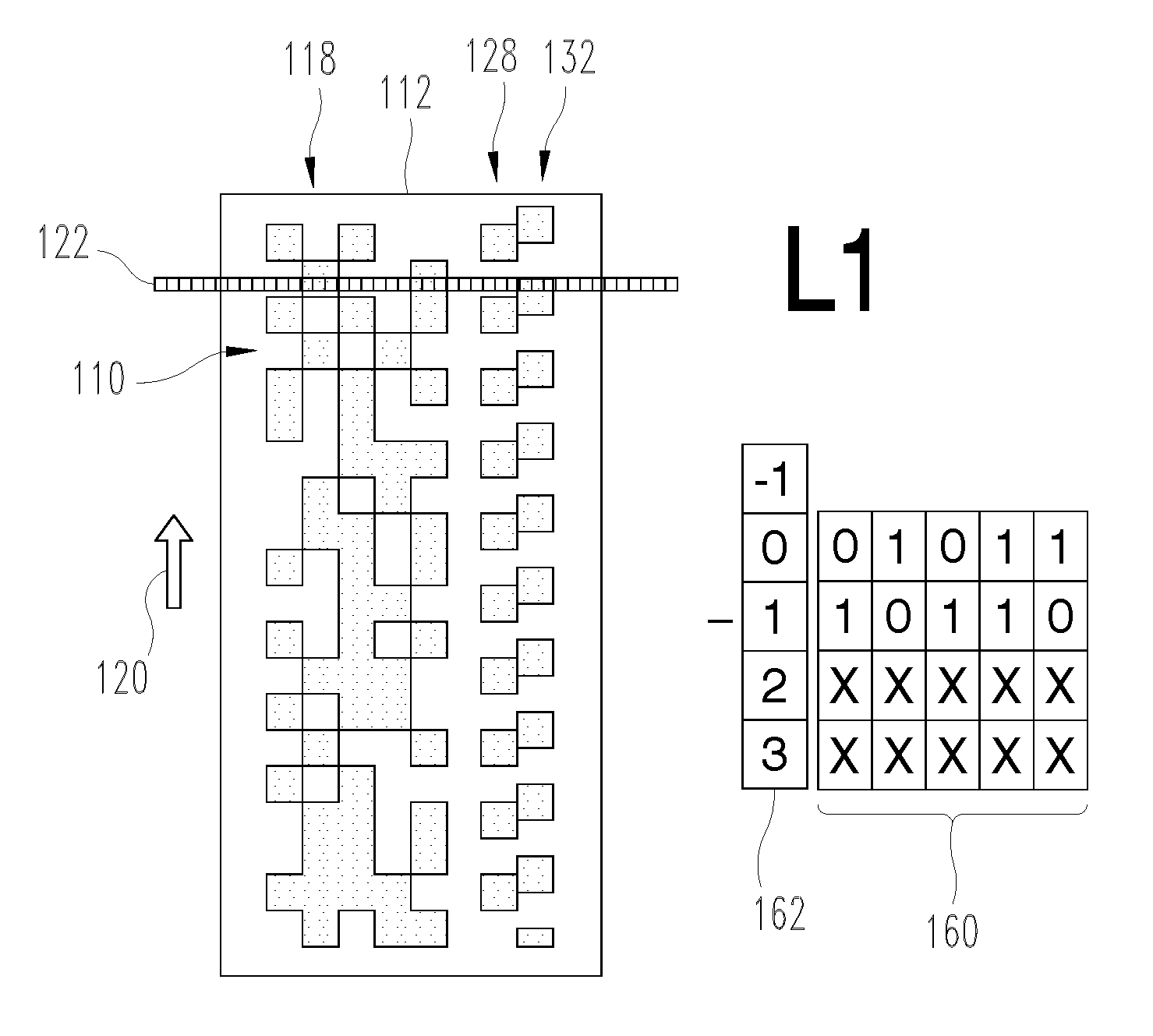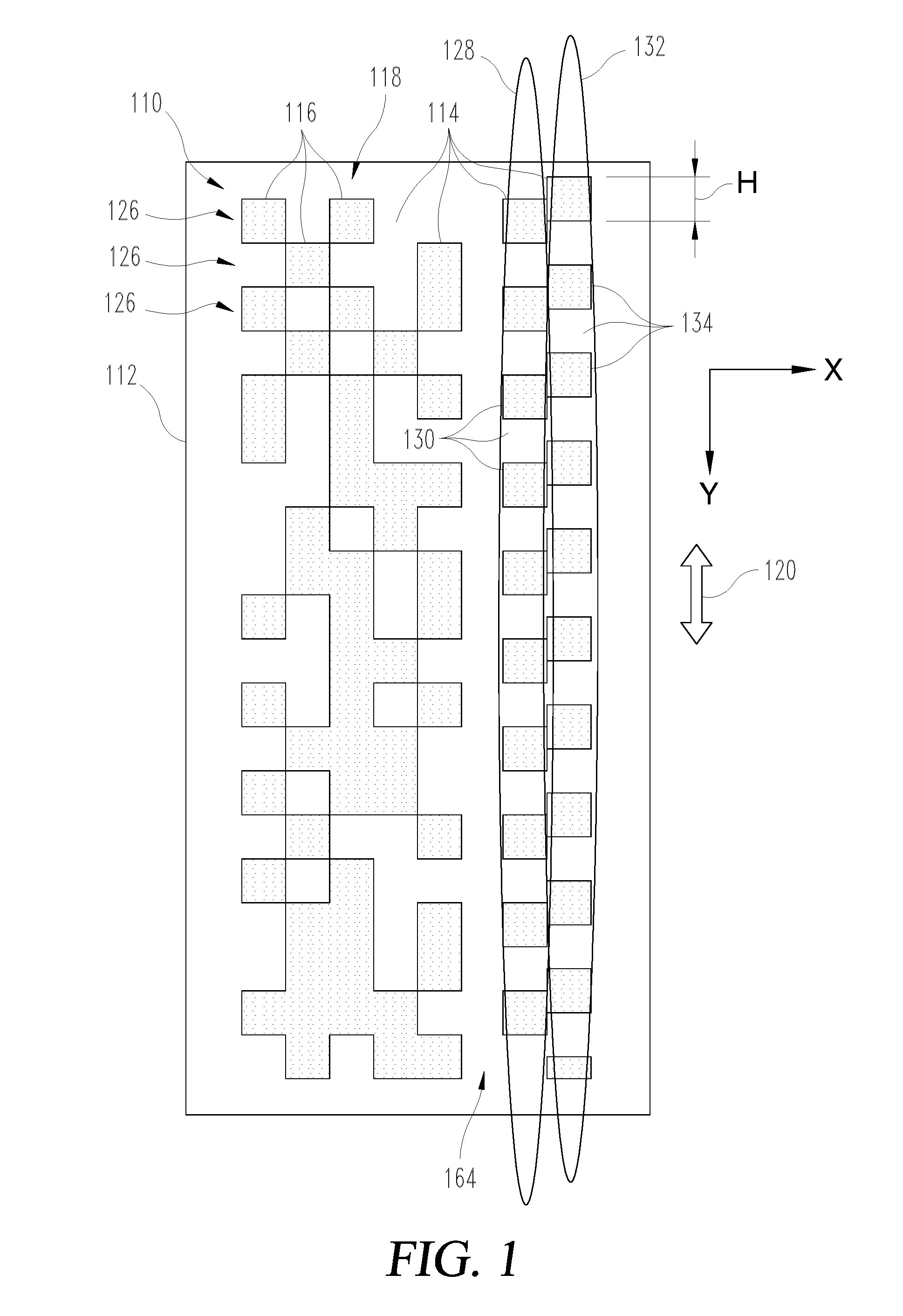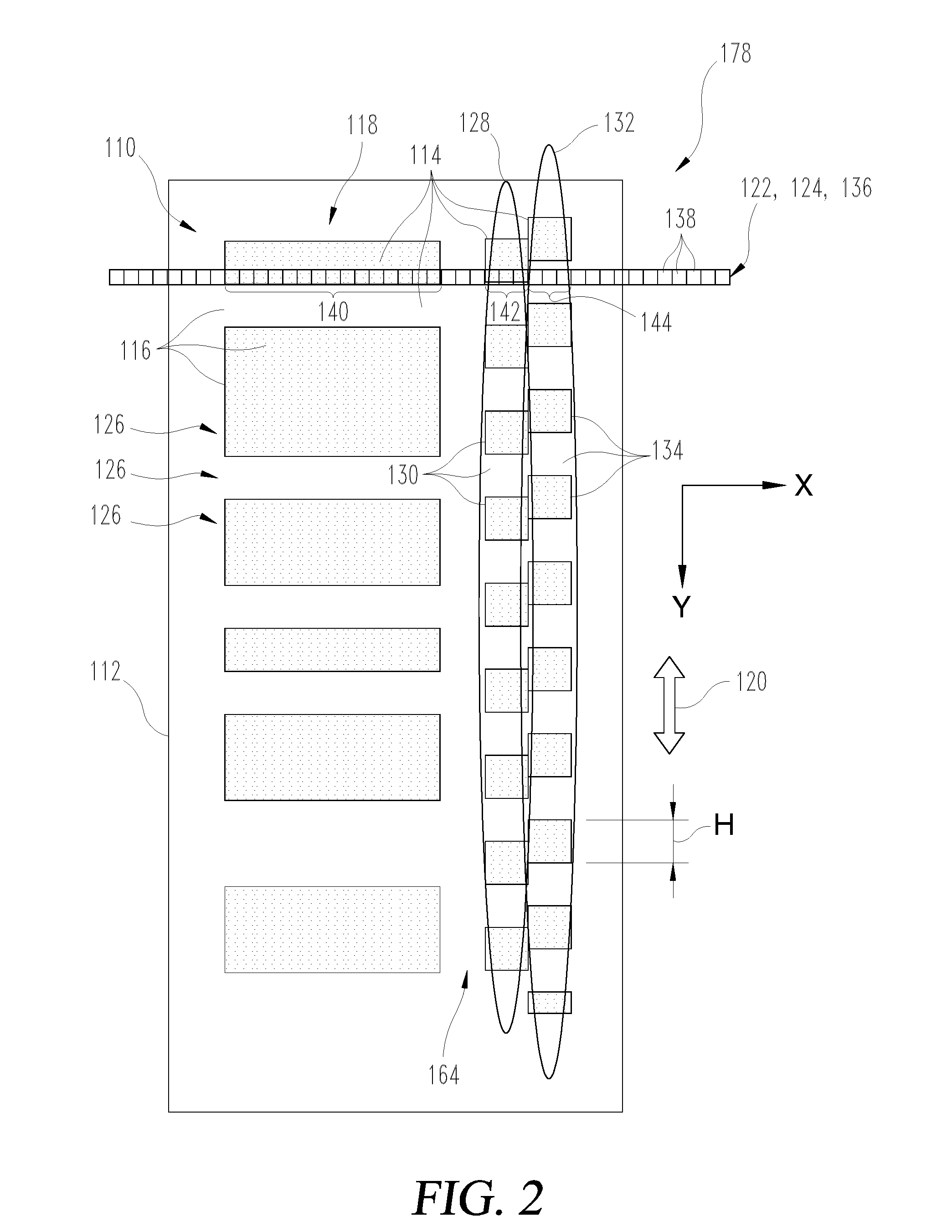Optical barcodes having spatially phase shifted clock and reference tracks
a phase shift clock and optical barcode technology, applied in the field of barcode readers, can solve the problems of new scanning attempt, inability to meet the demands of speed constancy and unidirectionality, and all previously used barcodes assume precise unidirectionality, etc., to achieve sufficient headroom, reduce the effect of angle-offset errors and greater module heigh
- Summary
- Abstract
- Description
- Claims
- Application Information
AI Technical Summary
Benefits of technology
Problems solved by technology
Method used
Image
Examples
Embodiment Construction
[0106]The following descriptions of the embodiments are merely exemplary in nature and are in no way intended to limit the present invention or its application or uses.
[0107]As illustrated above, one idea of the present invention comprises reading out a barcode in such a way that two mutually phase-offset and sometimes coincident signals from a clock track detector and from a reference detector are compared. Here, these can either be signals which were recorded by means of the same clock track but with a spatial phase offset with respect to one another, or signals from a clock track and a separate, phase-shifted reference track of the barcode. Combinations of these options, or other embodiments by means of which the phase-offset signals can be produced, are also feasible.
[0108]FIGS. 1 and 2 illustrate, in an exemplary fashion, exemplary embodiments of two different embodiments of optical barcodes 110. By way of example, the barcodes 110 can each be applied to a carrier 112 or be con...
PUM
| Property | Measurement | Unit |
|---|---|---|
| angle tolerances | aaaaa | aaaaa |
| angle tolerances | aaaaa | aaaaa |
| angle tolerances | aaaaa | aaaaa |
Abstract
Description
Claims
Application Information
 Login to View More
Login to View More - R&D
- Intellectual Property
- Life Sciences
- Materials
- Tech Scout
- Unparalleled Data Quality
- Higher Quality Content
- 60% Fewer Hallucinations
Browse by: Latest US Patents, China's latest patents, Technical Efficacy Thesaurus, Application Domain, Technology Topic, Popular Technical Reports.
© 2025 PatSnap. All rights reserved.Legal|Privacy policy|Modern Slavery Act Transparency Statement|Sitemap|About US| Contact US: help@patsnap.com



